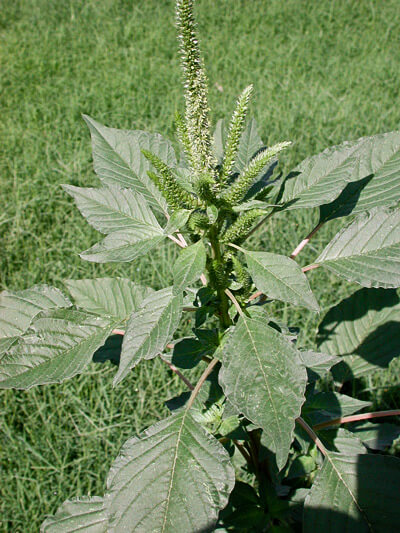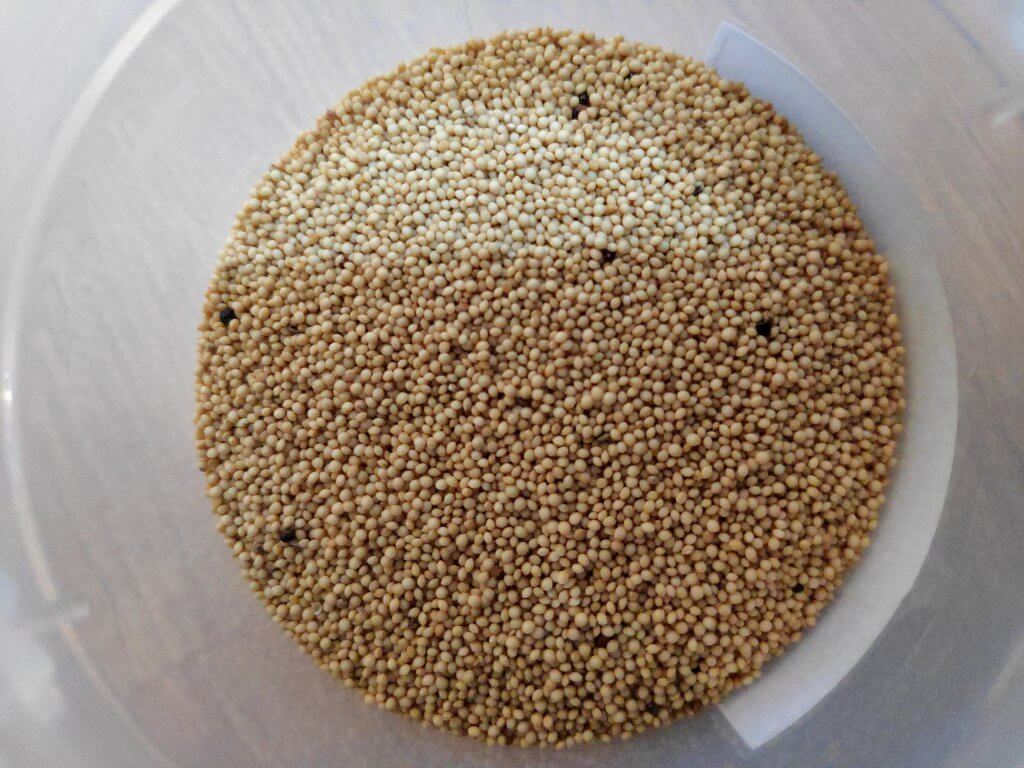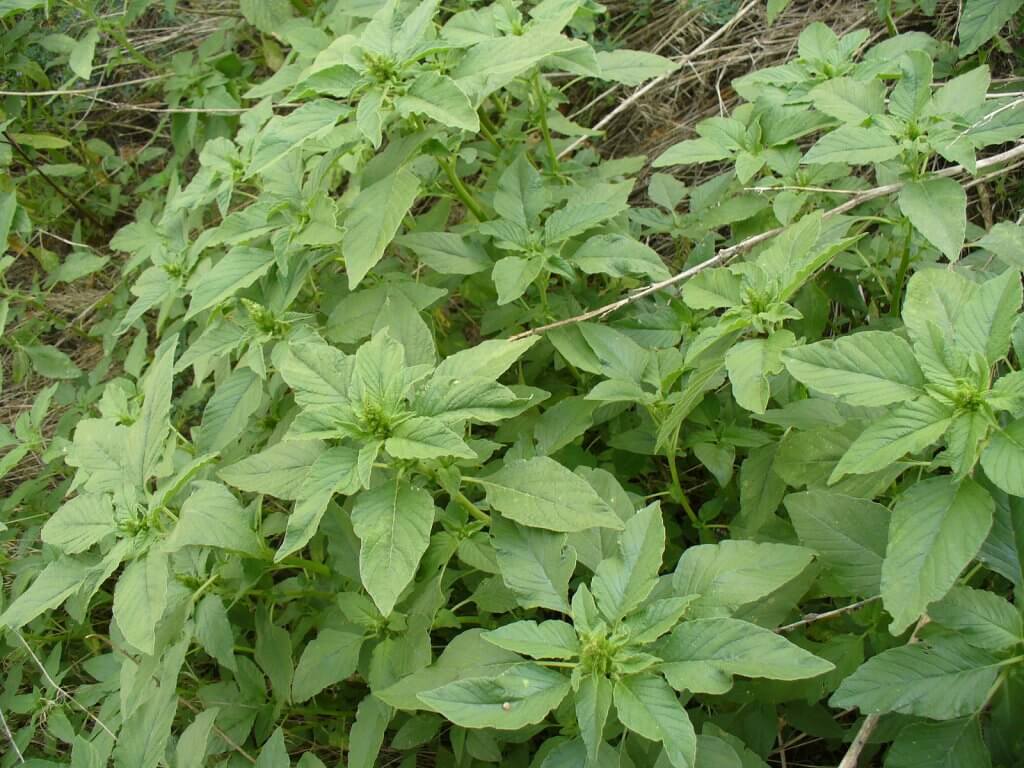Amaranth (Amaranthus spp.) plants are a collection of approximately 75 mostly annual species (several being perennial), with most having edible seeds, shoots, and leaves. They are particularly hardy, herbaceous shrubs, growing well in a variety of conditions.
This has resulted in many species being referred to as weeds, especially the varieties known as ‘pigweed’. Seed production is also very high, meaning it has the ability to spread prolifically.

The different amaranth species feature a small variety of different leaf and flower shapes. However, the most recognizable feature is the flower head clusters or ‘cymes’ which greatly resemble catkins. Typically they will grow to a maximum height of around 2 meters, although most will settle around 1 meter in height.
Of the 75 species, 10 are thought to be native only to parts of North America and Mexico. These include mat amaranth (Amaranthus blitoides) and palmer amaranth (Amaranthus palmeri). Palmer amaranth is particularly prolific in midwestern states where farmers often battle to keep it at bay.
Edible parts and other uses
Seeds were eaten by Native Americans, specifically the Amaranthus blitoides variety. The seeds would be eaten raw or ground into flour and combined with other ingredients to create bread or small rolled snacks.
Within the last few decades, interest has greatly increased in the cultivation of amaranth. For rural areas, or developing countries, it is a crop that provides a high quantity of protein, and compared to other crops it is thought to be easier to harvest, prepare, and cook.

The leaves, shoots, and stems are also edible in a number of species, particularly palmer amaranth and common amaranth (Amaranthus retroflexus). They are highly nutritious and can be used in salads and as a leafy green in many cooked dishes.
Other edible species include Amaranthus tricolor, Amaranthus cruentus, and Amaranthus blitum. These particular varieties are cultivated for their leaves within areas of Eastern Asia. The Amaranthus viridis or ‘green amaranth’ is cultivated in Greece and the leaves are combined with a dressing to create a salad.

Foraging
Foraging in the Midwest is a rewarding experience, and amaranth is a great plant to forage and collect. You will find it growing in a wide range of areas, from forest and field edges to the weed patch at the end of your garden.
Generally, the more tender shoots and young leaves will be best when used raw within a salad. For cooked greens and side dishes, the larger leaves and thicker stems will become tender after boiling.
Cautions
No species within the amaranth genus are considered poisonous. However they are often rich in nitrates, so when boiling leaves and stems the water should be discarded afterwards.
Amaranth can also contain high levels of oxalic acid. This means that those who tend to avoid spinach and similar leaved vegetables due to kidney problems should not consume too much amaranth. It can also be toxic to farm animals, as well as it being competitive to crops, making it a very loathed plant for farmers.
Did you know…
Amaranth has a long and interesting history, with evidence of the Aztecs using seeds for a large portion of their diets. From preparing the grains for drinks and foods within special rituals. To creating sweet snacks with a mix of cacao and honey.
Amaranth was a very important part of their ancient diet. Even today, many cultural events within Central America and Mexico use Amaranth in their festivities. Including amaranth grains that are used to create Day of Dead (Día de Muertos) sweet treats.

Conclusion
Harvesting your own amaranth leaves throughout the spring and summer months provides a great yield of produce. It is always best to pick the leaves and shoots before they begin to mature and flower. This ensures that seed production is kept at a minimum, minimizing the spread of the plant.
Plus, older plants can also become a bit too tough for salads. Frequent picking will encourage new and bushy growth. Amaranth can make a fantastic alternative to greens like spinach and kale.
If you like the taste of the seeds or shoots, Amaranth is an amazing ancient grain that can be grown in a garden too.
—————Written by Hannah Sweet
Hannah is a freelance writer and graphic designer from the UK. With a penchant for travelling, photography and all things botanical, she enjoys writing about a wealth of topics and issues, from conservation and slow living, to design and travel. Learn more about her writing and design services at www.sweetmeanders.co
Many of our readers find that subscribing to Eat The Planet is the best way to make sure they don't miss any of our valuable information about wild edibles.
See our privacy policy for more information about ads on this site







3 Responses
i purchased some amaranth seed to grow and consume. i am new to foraging and purchased a book on line but need more to learn and how to actually prepare things.
The Aztecs used amaranth in their blood sacrifices. The Spanish sought to eliminate that practice and destroyed amaranth seeds. Some of course, were hidden away and today we have those seeds.
It is best to use the young leaves for salads and dishes. Amaranth is also used medicinally. Make a tea with the chopped leaves. It is astringent and can be used for mild stomach and intestinal irritations . It can be used in stomach flu, aids in mild diarrhea. Fresh leaves can be used for a cooling poultice. The primary nutrients in the tea are calcium, potassium, ascorbic acid and beta carotene. Of course, when using just the seeds for food and not the flour, the seeds must be ground or they will pass right thru the gut. The seeds can also be used like psyllium for bowel movements. Jessie Emerson, RN, Certified Clinical Herbalist
Thank you for the info